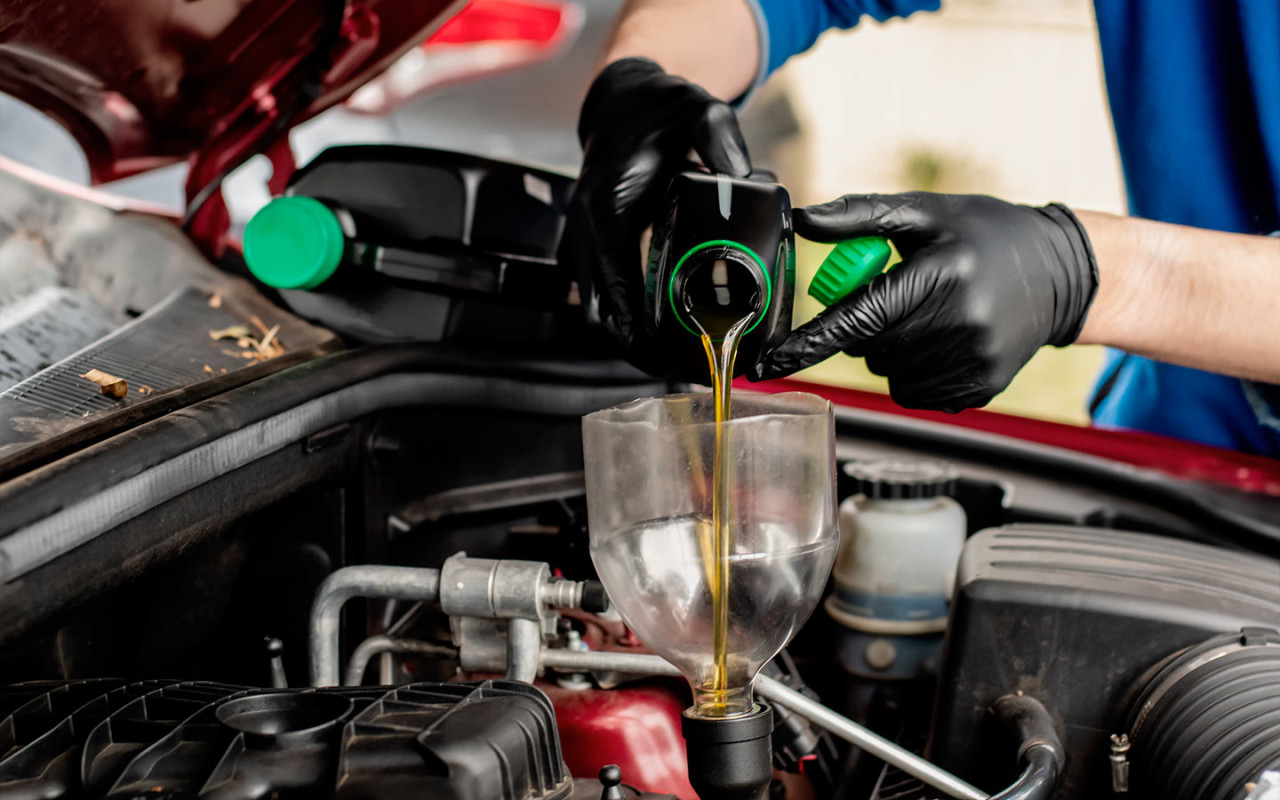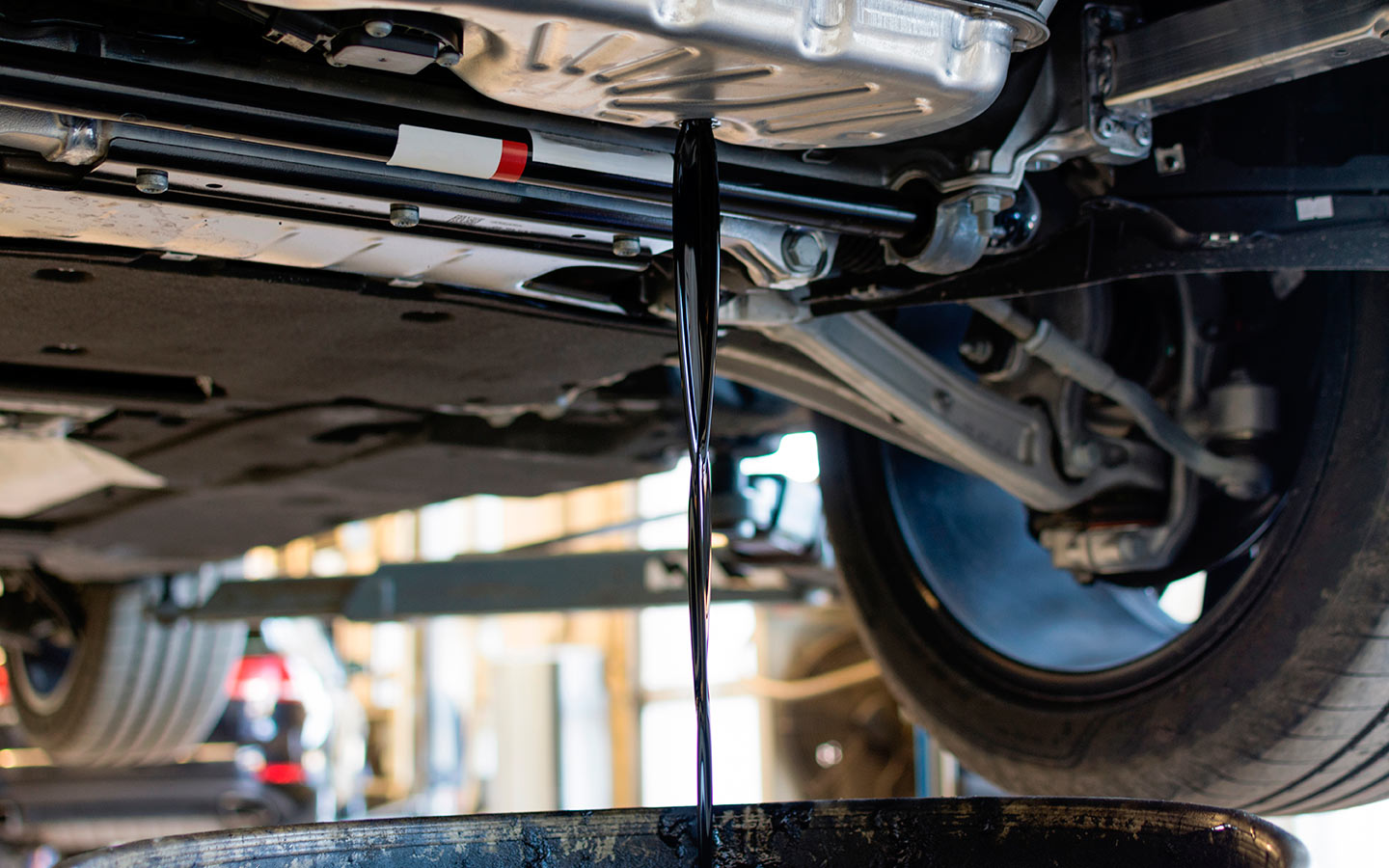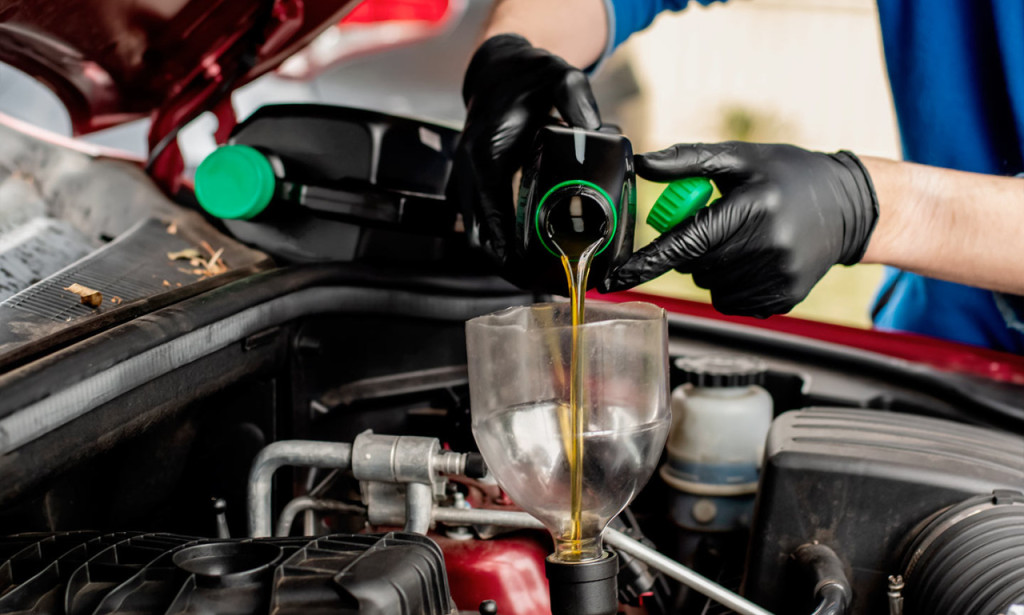A distinctive feature of any internal combustion engine is that sludge and deposits accumulate in it. Contamination can lead to engine failure, so it is necessary to flush it. Let's figure out how to do it correctly.

Engine flushing. Photo: Shutterstock
Contaminants can clog oil channels, restrict fluid flow, and cause engine failure.
Problems can be avoided by using high-quality modern motor oils. However, additional cleaning is sometimes necessary. Flushing is one such option. Let's take a look at what it is, what types there are, and when it is best not to flush the engine.
What is engine flushing?
Engine flushing is a preventive procedure for cleaning the internal combustion engine of deposits, sludge, and other contaminants. Special additives or oils are used for this purpose. They help break down the products of incomplete fuel combustion, wear on friction mechanisms, and other solid deposits in the circuit.
Despite the variety of products available — from ‘five-minute’ to long flushes — these ‘cocktails’ work in much the same way. The mixture is poured into the oil filler, and the engine is allowed to run at idle speed. During this time, the liquid circulates through the system and flushes out contaminants.
The advisability of flushing is usually justified as follows:
- If the oil channels are clogged, the engine will have difficulty operating at full power. Flushing helps prevent clogging and other subsequent problems.
- New oil stays clean longer. This is important if the oil has been changed at extended intervals. Flushing will help avoid mixing old lubricant residues with new ones.
- The accumulation of deposits and other particles directly affects the operation of internal combustion engine parts, and flushing restores the oil film on friction surfaces.
- Cleaning the circuit will ensure free circulation of new oil in the engine, which will improve engine performance.
‘In some cases, the use of flushes is justified and can extend the service life of the engine. In engines with high mileage, increased sludge and varnish formation is due to general wear of the cylinder-piston group, valve seals, and too long oil change intervals.’

The flush is poured into the oil filler neck, and the engine is allowed to run at idle speed (Photo: Shutterstock)
All these factors lead to accelerated engine contamination and oil ageing, reducing the time between major repairs. However, a heavily worn engine cannot be saved by flushing, so the use of flushes should be considered on a case-by-case basis and preferably agreed with a mechanic.
When to flush the engine
Modern motor oils contain additives that clean the engine. However, their effectiveness decreases over time. Combined with high mileage, irregular oil changes, or the use of lubricants of dubious quality, the amount of contamination increases. Flushing helps to get rid of it.
- Untimely oil changes are the leading cause of deposits and sludge formation. But even if all deadlines are met, it is impossible to clean the system thoroughly. The residue can range from 8% to 20%.
- If you have purchased a used car, it is impossible to know how often and what type of oil the previous owner used.
- When there is a radical change in the oil base, for example, from mineral to synthetic. This also applies to situations where seemingly similar but different oils have been added to the engine little by little — cheaper oils or oils from other manufacturers. Each mixture has a different composition, and it is best not to mix them.
- After a long period of inactivity or prolonged driving under heavy loads under challenging conditions.
- Engine flushing may be recommended if antifreeze or poor-quality fuel has entered the system, after decarbonisation or significant repairs.
When engine flushing is not necessary
Sometimes, deposits that have accumulated in the system are the only thing protecting worn or cracked seals from oil leaks. In such cases, experts recommend reducing the oil change interval and using a lubricant with high cleaning properties. In addition, flushing should not be performed:
- When purchasing a new car, as well as when there is a direct prohibition from the manufacturer. For example, in one of its official bulletins, General Motors stated that it does not approve or recommend flushing its 2020 model year petrol engines due to possible damage to its components. Similar instructions can be found from other manufacturers.
- If you are the sole owner of the car and have changed the oil regularly, there is no need to flush the engine.
- In case of severe engine contamination. In this case, there is a risk of damage.

A heavily worn engine cannot be saved by flushing (Photo: Shutterstock)
Types of flushes
There are several types of flushes, which differ in the active ingredient and how the procedure is performed. As a rule, it is performed before changing the oil, after decarbonisation, or significant repairs.
‘Five-minute flushes’
Sold in small bottles. These are pretty aggressive chemicals. Solvents and various solvents are added for an instant effect. A ‘five-minute’ flush is performed with the engine idling without draining the main oil. After running, it is removed from the system, the filter is replaced, and fresh lubricant is added.
Flushing oil
A more gentle method, which uses mineral oils with a large number of detergents and neutralising additives. These compounds are sold in 5 or 6-litre canisters, i.e., they are designed for the entire volume. They completely replace the old oil and allow the engine to run at idle speed. Then replace with the primary lubricating fluid.
Long flushing
These fluids are similar in composition to five-minute fluids, but with the difference that they require a specific mileage to work, rather than just a few minutes. This is usually about 100 km, during which it is advisable not to drive recklessly and avoid extreme conditions. Then the used fluid is drained along with the cleaning agent, and new oil is added.
Oil flushing
In this case, the same type of oil is used as the one that will be used for driving. The car owner changes the oil and drives 1,000-2,000 km. After that, another oil change is performed. This method is one of the safest, but the cleaning effect will be less compared to similar methods.
How to choose a flush
According to expert Tarasov, the most effective option is to use so-called ‘five-minute’ flushes. However, you can also use compounds that are added several hundred kilometres before the oil change or immediately before. When choosing a flush, pay attention to the following nuances:
- Engine type. The product should be selected not only based on the type of engine (petrol or diesel), but also on its characteristics, such as whether it is turbocharged or supercharged. In addition, there is a separate line of flushes for motorcycles, trucks, and watercraft.
- Aggressiveness of the composition. If you are not sure that a strong flush is necessary, it is better to choose a gentler composition. This is especially true for engines with high mileage and a ‘dark’ history of operation. Some manufacturers may indicate on the packaging that the flush is safe for rubber seals.
- Manufacturer. It is better to buy such ‘chemicals’ from trusted brands and, of course, in large stores. Otherwise, there is a risk of running into a fake.
Summary of engine flushing
- Purpose: to clean the oil system of deposits and sludge.
- When to do it: when buying a used car, after prolonged downtime, when changing the type of oil.
- When not to do it: in new cars, during regular maintenance, for worn engines.
- Types of flushing: ‘five-minute’ flushes, flushing oils, long flushes.
- Choosing a product: based on engine type, aggressiveness, and brand.
- Important: replace the filter, use in moderation, follow the instructions.
- Alternative: high-quality oils with detergent additives.
Read my articles
https://stattya.com/solaris-krs-technical-specifications-configurations-pros-and-cons-248
https://stattya.com/valve-adjustment-what-it-is-and-why-it-is-necessary-651
https://stattya.com/how-an-oil-pump-works-functions-common-failures-repair-tips-260


You must be logged in to post a comment.